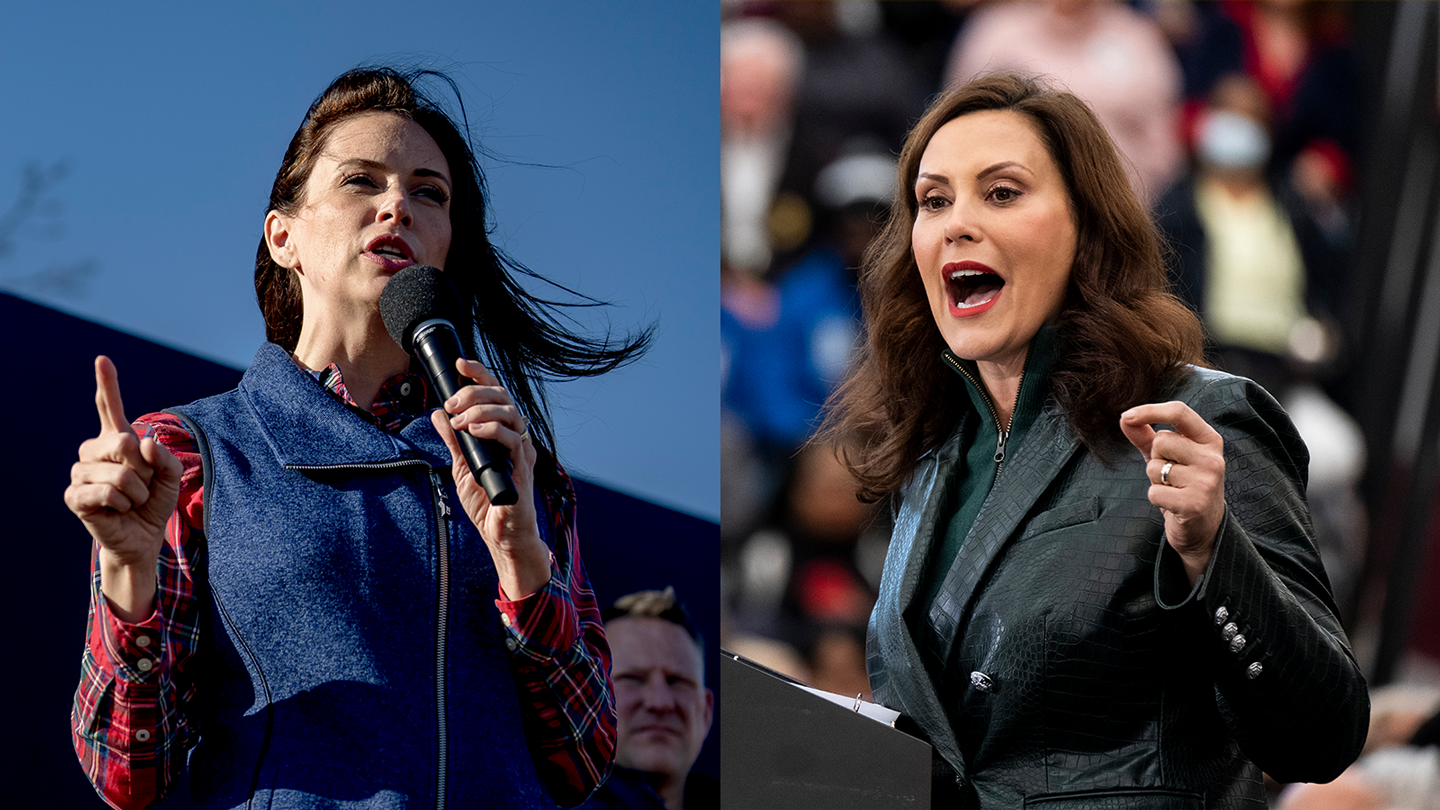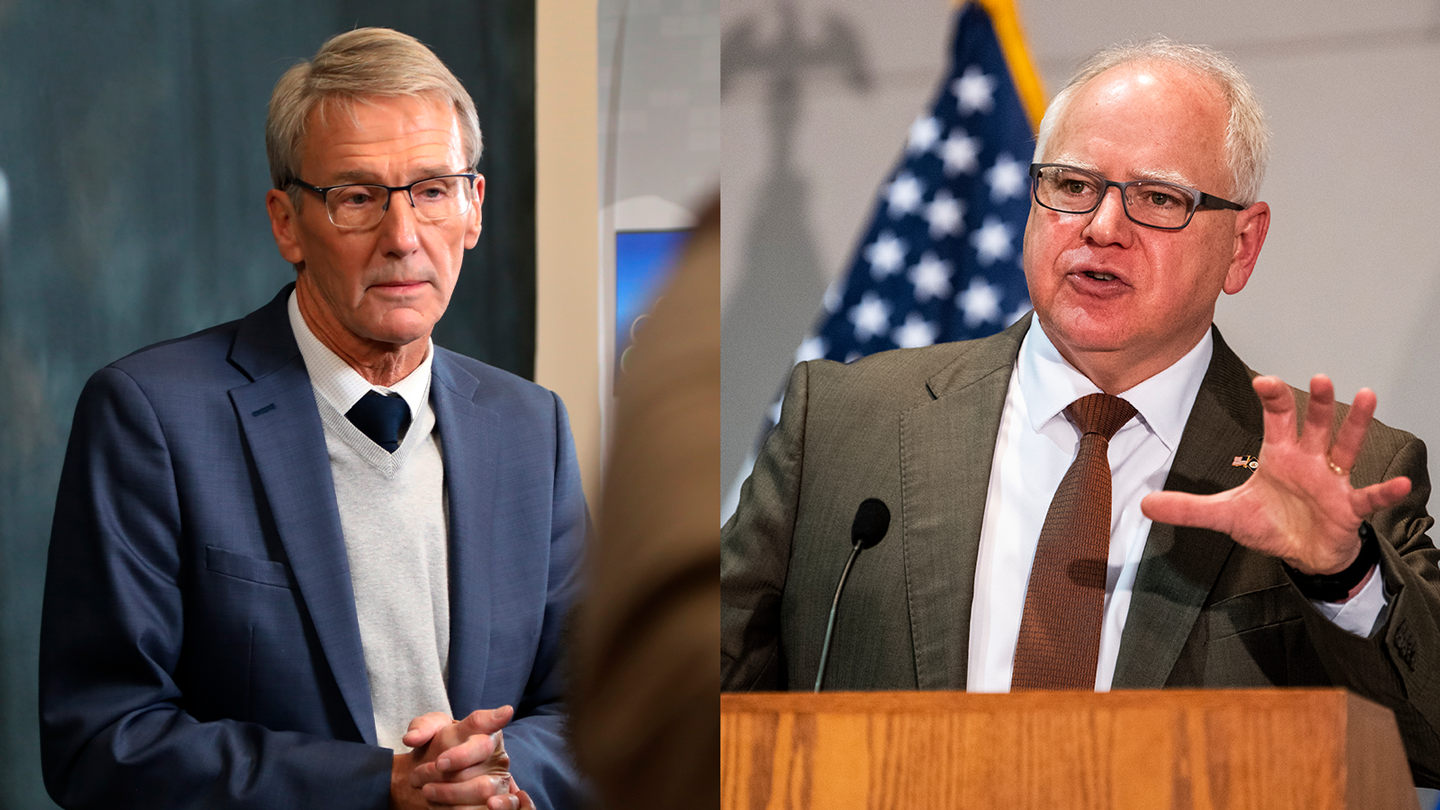Some Midwestern states want to go carbon-free by 2050. This year's midterm elections could throw a wrench in those goals.
Next week, voters in Michigan, Minnesota and Wisconsin will they go to the polls and voted for governor. All three states have sitting Democratic governors who have enacted clean energy plans for the state in the past three years. All face Republican challengers with ties to the fossil fuel industry or who have campaigned to extend the life of polluting infrastructure.
Experts say if Republicans win those races, they have the potential to slow progress in that direction carbonization or even dismantle states' climate plans altogether.
Wisconsin, he noted hovering state in the presidential election, he has plans for all the electricity consumed in the state to be 100% carbon free by 2050 according to an executive order signed by Democratic Gov. Tony Evers in 2019. The race for governor of the state was extremely tight between incumbent Gov. Evers and Republican challenger Tim Michels, CEO of one of the nation's largest infrastructure and construction contractors .
Michels, who did not respond to repeated requests for comment, has strong ties to the oil and gas industry. His company has worked on the Line 5 pipeline, Dakota Access Pipelineand Keystone XL Pipelineand while Michels claims he will divest from the company if elected, this process it is a difficult undertaking.
Michigan Governor Gretchen Whitmer, who signed executive order in 2020 to make the state's entire economy carbon neutral by 2050 is being challenged by Trump-backed Republican candidate Tudor Dixon, who has a career in the media and steel industries. Energy was a central theme in the match. Whitmer's order to shut down the Line 5 pipeline — an oil pipeline that spans Upper Michigan and Wisconsin, including Great Lakes waters — was a frequent talking point for Dixon, whose campaign did not respond to written questions.
The challenger has campaigned to keep Line 5 open and put in place safeguards that prevent future interference with its operations. Earlier this year, Dixon he told a local publication that the Line 5 pipeline is “too important to our economy for liberal radicals like Gretchen Whitmer to sabotage it. When I defeat her, line 5 will be safe from her attacks.”
Minnesota already had a climate plan before Democratic Gov. Tim Walz took office, thanks to Act 2007 that aims to reduce the state's greenhouse gas emissions by 30 percent by 2025 and 80 percent by 2050. But since the state was not on track to meet those goals, Walz issued a executive order in 2019 to create a new sub-office on climate change to establish new strategies to reduce emissions. The Walz administration also passed regulations to encourages more electric vehicle sales in the state starting in 2024, under California's “clean car” rule.

That rule was met with strong opposition from both the Minnesota Automobile Dealers Association and Walz's midterm opponent, Scott Jensen. The Republican candidate strongly opposes Minnesota's clean car rules and has said he would repeal the regulation if elected. Jensen, whose campaign declined to make the candidate available for an interview, has also advocated keeping open coal-fired power plants slated to close, including one facility that already turned into a solar project.
Minnesota's Walz has enjoyed one comfortable lead in the polls, but the Michigan race has tightens recently, while Evers and Michels were neck and neck in Wisconsin for weeks. Meanwhile, climate policy experts say the outcome of this year's gubernatorial races will set the course for those states for years to come.
“These Midwest governors and legislatures up for re-election in November are presiding over one of the most critical periods of opportunity for climate action,” said Samantha Williams, senior policy advisor at NRDC Action Fund and an expert on Midwest climate policy, Grist said.
Williams said states have an incredible opportunity to clean up their energy mix and create a greener economy, but the clock is ticking. Governors elected this year will be sworn in in 2023 and serve four-year terms through 2027. That's just over two decades away from the 2050 deadline set by Michigan, Minnesota and Wisconsin to fully achieve their clean energy plans .

Williams said governors can influence a state's climate action through planning, executive actions and department appointments. For example, governors appoint officials to utility boards, influential state agencies that regulate energy production and consumption. Jensen, the challenger in the Minnesota governor's race, has said he plans to appoint experts in “base load power” — a industry-friendly euphemism for coal power — to the state Public Service Commission and the Minnesota Department of Commerce.
The utility commissions “have very significant control over whether the state will move to clean energy quickly enough and what that future energy production will look like,” Williams said.
The Midwest has already seen a regional shift to clean energy. Clean energy companies employed more than 714,000 residents in 12 Midwestern states at the end of last year, according to a report by Clean Jobs Midwest.
“There are some states that are moving faster than others, and you see that in the Midwest as a microcosm,” Williams said.
This slow growth is often exacerbated by a political disconnect between the governor's office and the state legislature. Legislatures in Minnesota, Michigan and Wisconsin are currently either controlled by Republicans or split between Democratic and Republican control. Divided legislatures can make it difficult to pass climate laws, forcing climate-focused governors to resort to executive orders.
In Wisconsin and Michigan, all state clean energy goals are set by executive order. But it's easier for successive administrations to reverse legislation like the Minnesota Climate Act of 2007 or the ambitious climate law the Illinois governor signed last year.

Whether Republican governors roll back climate-related executive orders or simply undermine them with hostile appointments, the result is the same, according to Kerry Schumann, executive director of the Wisconsin chapter of the League of Conservation Voters: “We don't make the investments we have to. do' to clean energy.
Schumann said another reason this year's Midwestern gubernatorial races are so critical is that governors will have a say in how funding from the Inflation Reduction Act, the federal climate law passed in August, is distributed . The law grants states money to reduce pollution, reduce greenhouse gas emissions, train workers in clean energy and more.
“If the state of Wisconsin and other local governments aren't very conscientious and intentional about taking advantage of this money, we've just completely missed this opportunity to invest in clean energy and reduce pollution,” Shuman said.
Governors also have the power to work to promote clean energy at the regional level, Schumann pointed out. Recently, a coalition of Midwest governors announced plans to create clean hydrogen infrastructure in the region and creation of a network of electric vehicle charging stations in five states. Schumann said she worries Wisconsin and other Midwest states won't continue to work together on those plans if Republicans take office next year.
David Pelikan, policy associate for nonpartisan political organization Climate Vote in Minnesota, agreed that the ramifications of electing a Republican governor could reverberate across the region. “We see Minnesota as a regional leader in clean energy, and I think losing that leadership role is pretty devastating to climate progress throughout the upper Midwest,” Pelikan said.
This story has been updated to clarify Samantha Williams' job title.
